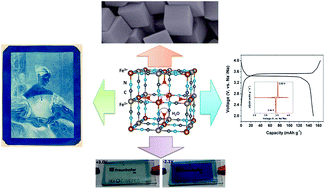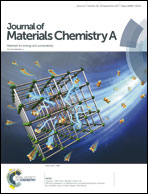A review on hexacyanoferrate-based materials for energy storage and smart windows: challenges and perspectives†
Abstract
Well-known since the 18th century and widely used in painting and later in photography, hexacyanoferrate, or “Prussian blue”, is currently getting its “second life” as a promising material in several of the most advanced fields of the present technological sectors. This is mostly due to the rapid development of the energy storage market, which requires advanced, reliable, but also cost-effective materials for large-scale applications in load-levelling of renewable energy power sources. Non-Li technologies are considered as one of the most fertile R&D directions in this field, and Prussian blue demonstrates extremely promising characteristics for this kind of application. The unique features of this material are due to peculiarities of its atomic structure and ionic and electronic properties. In this article we review and discuss current research efforts in this field employing different hexacyanoferrate-based compounds as potential electrochemical storage and electrochromic devices. After a brief review of its history, we analyze the peculiarities of the atomic structure of these types of systems. We further summarize and analyze the most important and interesting experimental electrochemical data in this field, linking the particular atomic structure of the studied compounds with their observed electrochemical behaviour. This provides us with a snapshot of the current experimental state in this field and allows us to make certain predictions for its future development.

- This article is part of the themed collection: Recent Review Articles


 Please wait while we load your content...
Please wait while we load your content...